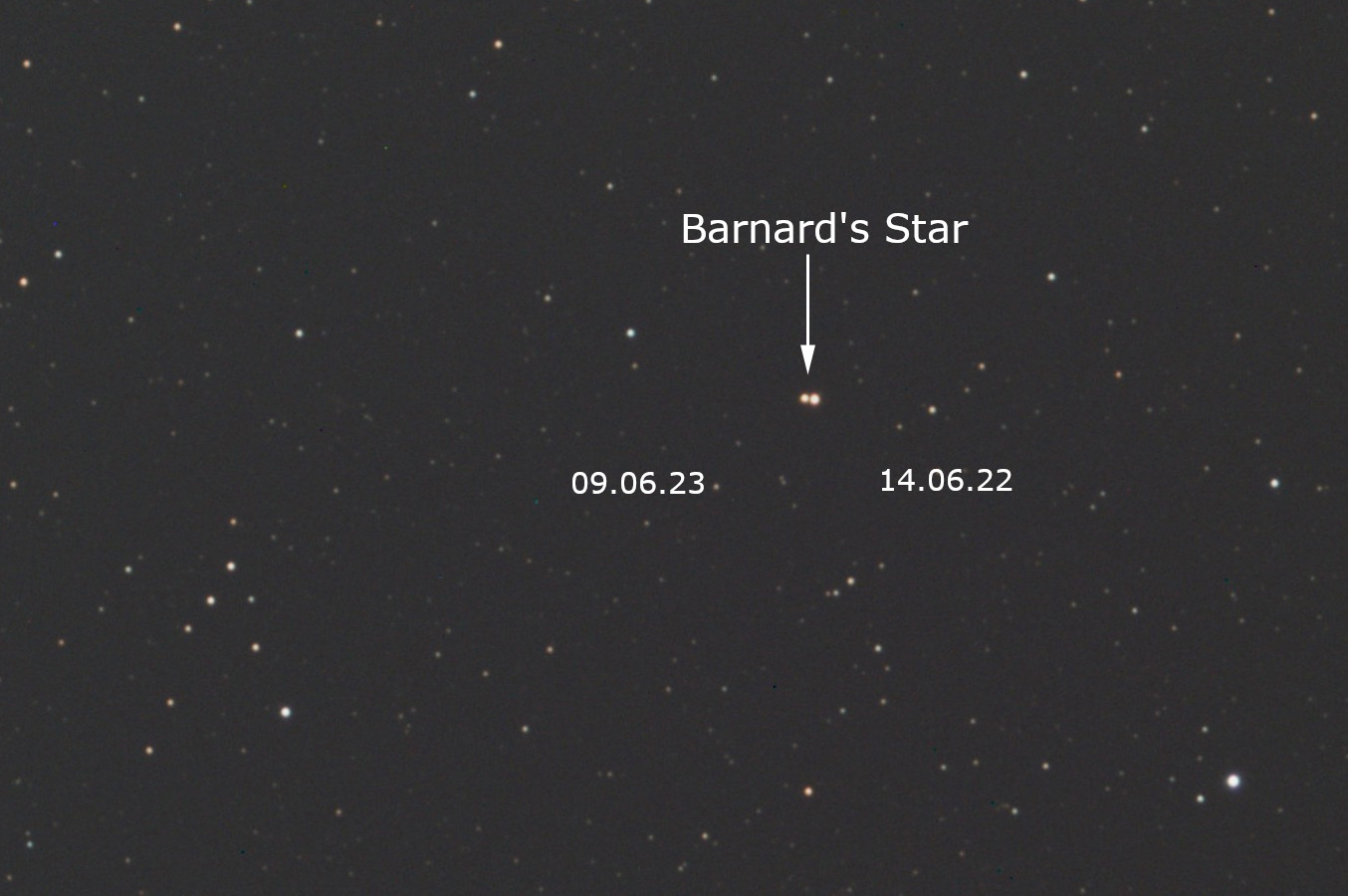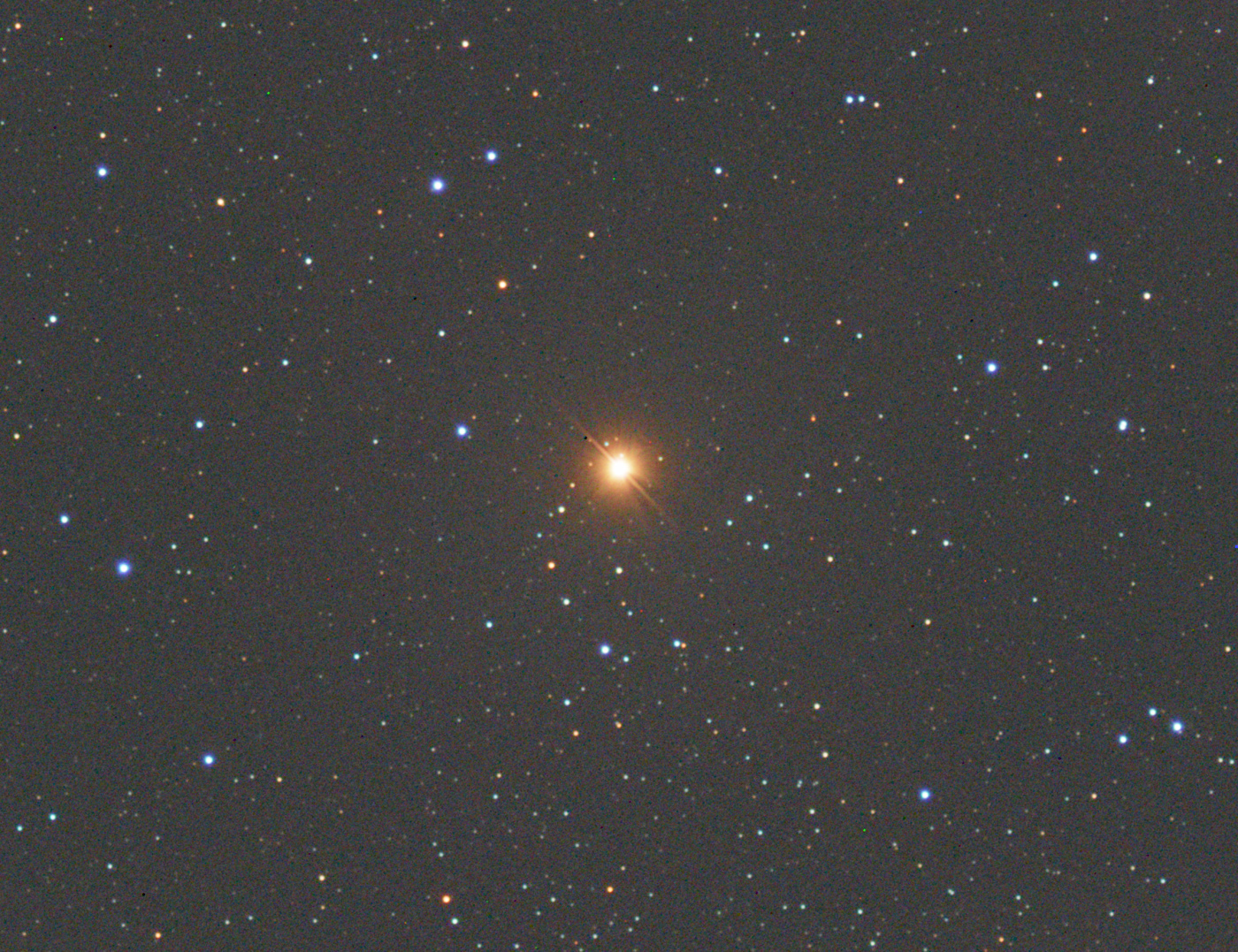
Derby and District Astronomical Society
Stars
[Gallery]
|
This unusual image of Polaris was captured by Nick Cowling in December 2024 while testing his new ZWO AM5n harmonic drive mount. It is a single 30 minute exposure taken with an ATIK 414EX colour CCD camera through a TS Optics 80mm f/6 triplet APO with field flattener. The image was processed using ATIK software. The banding is an artefact of the print that was produced from the image, which was then scanned. Image Credit: Nick Cowling.
|

|
|
Peter Branson captured this image of Barnard's Star on two separate occasions - one year apart, in June 2022 and June 2023. The camera used was a ZWO ASI533 cooled colour camera together with a TS Optics Photoline f7 telescope with a Hutech IDAS light pollution filter and field flattener, mounted on an NEQ6 mount. Barnard's Star lies in the constellation of Ophiuchus, and at a little under 6 light years away, is the next closest star to the Sun after the Alpha Centauri system (which is just over 4 light years distant). Consequently, it has the largest proper motion across the sky - 10.3 arcseconds per year. Two sets of images were produced on each occasion and then combined in Nebulosity. There is a 10 pixel spacing between the two images of the star and given that the telescope/camera combination has a field of view of 1.09 arc/pixel resolution, that gives 10.9 arcseconds movement over the year - not a bad result! Image Credit: Peter Branson.
|

|
|
This image of the Garnet Star (Mu Cephei or Erakis) was taken by Peter Branson on the 15th July 2022. The image is made up from 30 x 30s separate images - a total exposure of just 15 minutes. The images were taken with a ZWO ASI533 cooled colour camera together with a TS Optics Photoline f7 telescope with a Hutech IDAS light pollution filter and field flattener attached, mounted on an NEQ6 mount. A filter wheel fitted with LRGBHa filters was used to capture these images (Luminance only). The images were stacked in Nebulosity, then PixInsight was used to remove background gradients and noise and some further post-processing including using levels and curves. Peter says - "The Garnet Star just shines out in the image. The colours in all the stars in the image have been enhanced to show the richness of the colours in the whole scene." Image Credit: Peter Branson.
|

|
[Top]